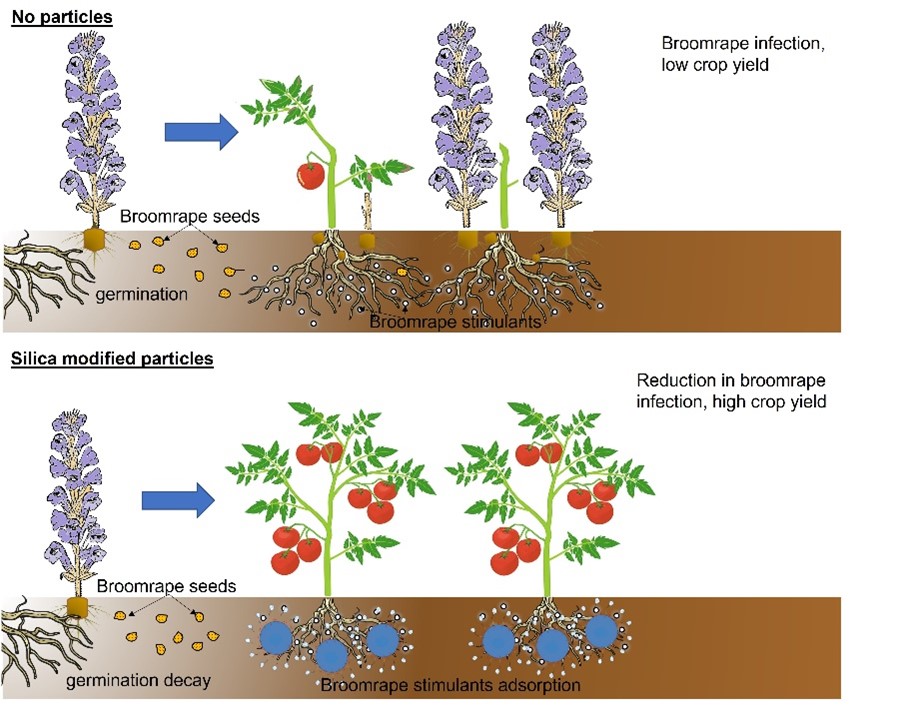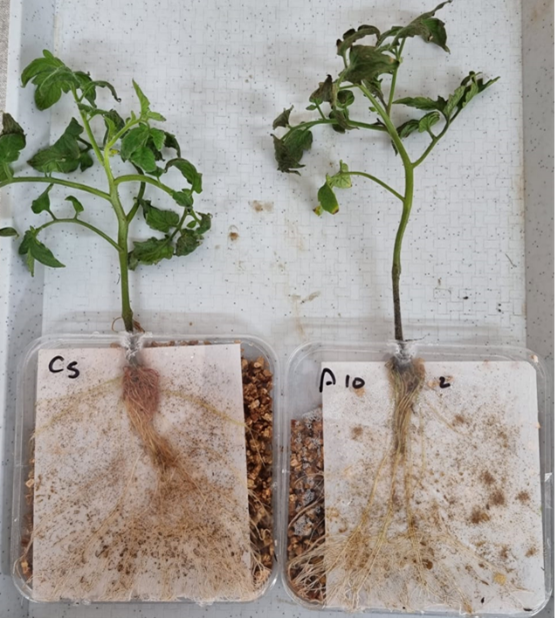Abstract
New composite particles for parasite weed (broomrape) control, based on preventing the communication between the parasite and host.
Background
Broomrape, also known as a parasitic weed, refers to a group of flowering plants belonging to the genus Orobanche. These plants are notorious for their parasitic nature, as they attach themselves to the roots of various agricultural crops and siphon nutrients and water from the host plants. Broomrape is a significant threat to global agriculture, causing substantial economic losses and hindering crop productivity.
Geographic Distribution:
Broomrape is widely distributed across different regions of the world, predominantly in areas with a Mediterranean climate. It is particularly prevalent in countries such as Spain, Italy, Greece, Turkey, Israel, Iran, and parts of North Africa. However, broomrape infestations have also been reported in other regions, including parts of North America, Australia, and Asia.
Economic Impact:
The economic impact of broomrape on agriculture is significant, causing substantial financial losses to farmers and agricultural industries. The parasitic nature of broomrape plants leads to reduced crop yields and poor quality produce. This translates into direct economic losses due to decreased harvests and lowered market value for affected crops.
The costs associated with broomrape control, crop damage, and yield losses are considerable. In some instances, the economic losses incurred by farmers can amount to millions of dollars annually.
Available Treatments:
Addressing broomrape infestations requires a multi-faceted approach that combines preventive measures, cultural practices, and targeted treatments. Some common strategies for managing broomrape include Crop Rotation, Biological Control, Herbicide Control and Resistant Cultivars. However, the use of herbicides can have limitations due to potential environmental impacts and the development of herbicide resistance and breeding resistant cultivars can be challenging and time-consuming.
Overall, broomrape infestations are considered a significant challenge in agriculture, both in terms of economic impact and regulatory considerations. Efforts are being made to develop innovative and sustainable solutions to mitigate the damage caused by this parasitic weed and protect agricultural productivity.
Our Innovation
Since Broomrape infection typically involves a communication process between the parasite and the host plant. The researchers developed a novel approach of using new particles to disrupt this communication thus disrupting the germination process of broomrape seeds and preventing the initiation of the infection process thereby reducing the overall infection rate.
The researchers found that the composite particles reduce the infection of broomrape in tomato by at least 80%.
Technology

(A) Broomrape seed germination inhibition (%) applying 1, 10 and 50 g/L of Particle 1, Particle 2 and Particle 3 in Petri dishes. (B): Broomrape Infection of tomato roots (tubes formation) applying, 10 and 50 g/L of Particle 1 and Particle 3 in a hydroponic system.


(A) Broomrape inflorescence rates 60 days after planting (DAP). (B) Biomass estimation from images taken at 60 DAP, calculated as green pixels, normalized by pots related pixels.
Opportunity
We believe that the application of the designed particles has a better environmental impact, and can improve crop yield due to a decrease in broomrape parasite germination and infection degree are reduced from the earliest stage.
The researchers are looking for partnering with industry to sponsor further research and commercialize this novel technology.
